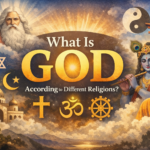Exploring the complex relationship between faith, beliefs, and digital platforms
In today’s interconnected world, social media has become an integral part of our daily lives. However, its impact on religion and spirituality is a topic that continues to spark debate. This article delves into the intricate relationship between religion and social media, examining both the benefits and challenges they present.
The Evolution of Religion in the Digital Age
How has social media transformed religious practices? The digital age has given rise to an interesting phenomenon where faith and technology meet in ways previously unimaginable. Have online sermons replaced traditional church services, and have virtual communities become a new form of worship? Can one really pray from their smartphone or read the Bible on a tablet?
The evolution of religion in the digital age is nothing short of revolutionary. Think about it: social media platforms like Facebook, Twitter, and Instagram have turned into virtual sanctuaries where believers can find solace, share their experiences, and connect with others who share their faith. Do these virtual spaces offer a true sense of community or just another form of superficial interaction?
One might argue that religion is inherently personal, a deeply intimate experience between the individual and the divine. Can it truly thrive in the public domain of social media where opinions clash and emotions run high? Or has social media provided a platform for religious leaders to reach out to those who may never step foot inside a physical place of worship?
The impact of these changes is profound. For many, social media has become an extension of their faith practice, offering access to teachings, scriptures, and spiritual support 24/7. But at what cost? Does the convenience of digital religion come with a sacrifice in depth and sincerity?
As we navigate this new landscape, it’s crucial to consider how these technologies shape our understanding of faith. Are we losing something essential by moving so much of our religious life online? Or are we opening up new possibilities for spiritual growth and connection that were simply not possible before?
The answer may lie in the balance between tradition and innovation. Can religion adapt while preserving its core values, or will it be forever changed by the digital world? The future of faith is being written every time someone taps ‘like’ on a post about their religious journey.
The Role of Social Media in Spreading Faith
The Role of Social Media in Spreading Faith: Investigate the impact of social media on the dissemination of religious beliefs and teachings.
Imagine if your faith could travel around the world without leaving your home—would you embrace this power? Social media has transformed how we share our beliefs, making it easier than ever for religions to spread their messages far and wide. But is this a blessing or a curse?
Consider the example of Christianity. Through platforms like Facebook and Instagram, churches can now reach millions with their teachings. Videos of sermons go viral, inspiring believers globally. Yet, could this ease of sharing also mean that unverified doctrines spread just as fast? How do we ensure that the true essence of our faith is preserved amidst the noise?
Similarly, Islam has embraced social media to connect with followers worldwide. Qibla apps help locate prayer directions, while online mosques offer prayers for those far from their communities. But how does this impact traditional religious practices? Do digital prayers hold the same weight as in-person ones?
The role of social media isn’t just about spreading good news; it’s also a double-edged sword. Misinformation can spread quickly, leading to confusion or misunderstanding within faith communities. For instance, do fake miracle stories undermine trust in genuine religious teachings? And what about the impact on younger generations who are growing up with these digital tools as an integral part of their spiritual lives?
Moreover, consider how social media affects the dialogue between different religions. While it can foster greater understanding and tolerance, it can also lead to conflicts and misunderstandings. How do we navigate these waters without letting disagreements overshadow common ground?
In conclusion, while social media offers incredible opportunities for faith communities, it also presents complex challenges. As we continue to explore this evolving landscape, one question remains: how can we ensure that our spiritual journeys on digital platforms are enriching and meaningful?
Challenges and Controversies: Misinformation and Cyberbullying
Have you ever wondered if social media is like a double-edged sword when it comes to religion? On one hand, it serves as a powerful tool for spreading faith and teachings (as we explored in the previous chapter). But on the other, it can become a breeding ground for misinformation and cyberbullying. The challenge lies in navigating this digital landscape where our beliefs are both shared and sometimes attacked.
Let’s take a look at one of the major challenges: misinformation. Imagine religion as a vast, ancient library with countless volumes of wisdom. Now, visualize social media as a bustling bazaar where anyone can add their own books—some of which might be outdated or even completely false. This influx of information can be overwhelming and confusing for many believers who are simply trying to find guidance in their faith.
Cyberbullying is another dark cloud on the horizon. Just like any community, religious groups have members who seek to hurt others through digital means. The anonymity provided by social media platforms can embolden some to engage in hurtful behaviors that they might not dare to do face-to-face. This can create a toxic environment where people feel unsafe and unsupported, damaging the very core of what their faith stands for—compassion and kindness.
How can we combat these issues? First, it’s essential to foster an environment of critical thinking and verification. Encourage users to fact-check information before sharing it. Second, establish clear guidelines and consequences for those who engage in cyberbullying. Third, promote a culture of support within religious communities where members feel comfortable reporting and addressing harmful content.
Ultimately, the challenge is not about eliminating social media from our religious lives but learning how to use it responsibly. By doing so, we can harness its power to spread positive messages while protecting ourselves from the pitfalls that come with this digital age.
The Digital Divide: Access and Equity in Religious Communities
The Digital Divide: Access and Equity in Religious Communities
Imagine a vast digital landscape where some religious communities thrive, while others struggle to find their way. This digital divide is more than just a difference in access; it’s about who has the resources and support needed to navigate the complex terrain of online platforms. How does this gap affect those seeking spiritual guidance or community support? Are there certain religions that are left behind, unable to bridge this chasm?
Consider the metaphor of an ancient library versus a modern bookstore. The traditional religious institutions are like the old library, filled with centuries of wisdom and teachings. But the digital platforms are akin to the modern bookstore, offering vast resources in minutes but requiring readers to have the means to access them. For many religious communities, especially those from less affluent backgrounds or remote areas, the challenge is not just finding what they need online, but also having the technological tools and literacy to do so effectively.
Take a moment to think about it: How can we ensure that no one is left behind in this digital age? Shouldn’t every religious community have equal access to the vast sea of information and resources available on social media platforms? This question is not just about technology but also about equity, inclusion, and the very essence of community and faith. As we move forward, how can we foster a more inclusive digital environment where all voices are heard and valued?
Navigating the Digital Landscape: Best Practices for Faith Leaders and Participants
Navigating the Digital Landscape: Best Practices for Faith Leaders and Participants
Imagine walking on a tightrope above a vast digital ocean, balancing between engaging your community and preserving their faith. How do you navigate this treacherous terrain? What tools should you use to ensure your messages are heard without diluting or misrepresenting your beliefs?
Firstly, consider the audience. Who are they? Are they primarily young people who spend most of their time on social media, or is your community more traditional and cautious about online platforms? Understanding your audience is key to choosing the right channels and tone. Just as a fish needs water to thrive, your message needs the right environment to resonate.
Secondly, establish clear guidelines. Develop a set of rules that govern how you communicate on social media. These should include guidelines for content creation, interaction with followers, and handling sensitive topics. Think of these guidelines as a lighthouse guiding ships through the fog—providing clarity in uncertain waters.
Lastly, be authentic and consistent. Authenticity is like a beacon that attracts true believers. Consistency ensures your message is recognized across platforms. Share stories from within your community to humanize your faith, making it relatable and understandable. It’s not just about what you say but how you say it.
In conclusion, the digital landscape offers endless possibilities for faith leaders and participants alike. By understanding your audience, setting clear guidelines, and staying true to your values, you can harness the power of social media to spread your message effectively. Remember, in this vast expanse of the internet, finding your voice is not just a task—it’s a sacred mission.
The Future of Religion in a Digital World
Imagine religion as a vast, ancient tree with deep roots and branches stretching wide. Now, consider social media as a young sapling, rapidly growing in the digital world. Can these two coexist without conflict? Or are they destined to clash?
The future of religion in a digital world is not just about survival but about transformation. As technologies like artificial intelligence and virtual reality become more integrated into our lives, how will religious practices adapt? Will prayer services evolve into immersive experiences or remain traditional rituals performed online?
Consider the case of virtual churches and mosques. These digital spaces can offer a sense of community to those who live far from places of worship or cannot travel due to health reasons. However, they also raise questions about authenticity and the spiritual experience. How can these digital spaces provide the same emotional and psychological support as in-person interactions?
Moreover, social media platforms are increasingly becoming battlegrounds for religious discourse. While some see it as a way to spread faith and engage with wider audiences, others view it as a source of division and conflict. Rhetorical questions abound: Can religion thrive when its messages are so easily misunderstood or misinterpreted? How can faith leaders navigate the complex digital landscape to foster understanding and unity?
The key lies in finding balance. Just as ancient trees adapt to their environment, religious institutions must embrace the digital age while preserving their core values. Will they find a way to use technology to spread love and compassion, or will it become a tool for division and discord?
As we look ahead, one thing is clear: the relationship between religion and social media is not static but dynamic. It requires constant examination, adaptation, and growth. The future of religion in the digital world is an exciting yet challenging journey, where every step forward could lead to new opportunities or unforeseen obstacles.
Will you join the journey?
Conclusion
 Ultimately, it’s clear that social media has transformed the way we practice our faith and engage with religious communities. While it offers numerous opportunities for spiritual growth and connection, it also presents potential pitfalls such as misinformation and cyberbullying. By understanding these dynamics, we can navigate this digital landscape more effectively and foster a healthier relationship between religion and social media.
Ultimately, it’s clear that social media has transformed the way we practice our faith and engage with religious communities. While it offers numerous opportunities for spiritual growth and connection, it also presents potential pitfalls such as misinformation and cyberbullying. By understanding these dynamics, we can navigate this digital landscape more effectively and foster a healthier relationship between religion and social media.











